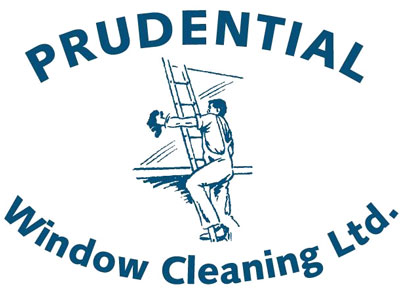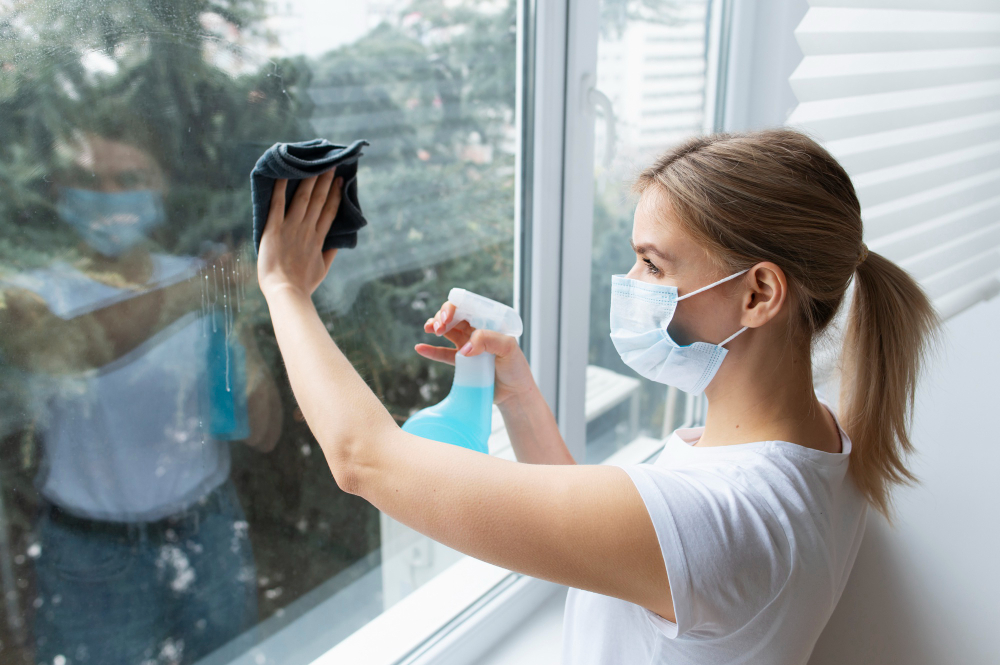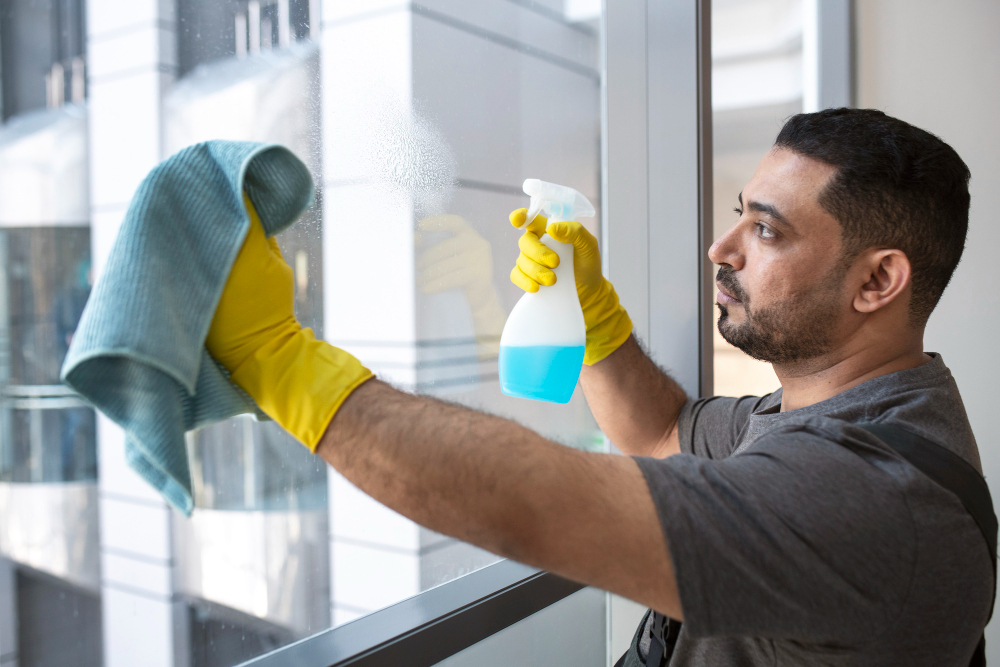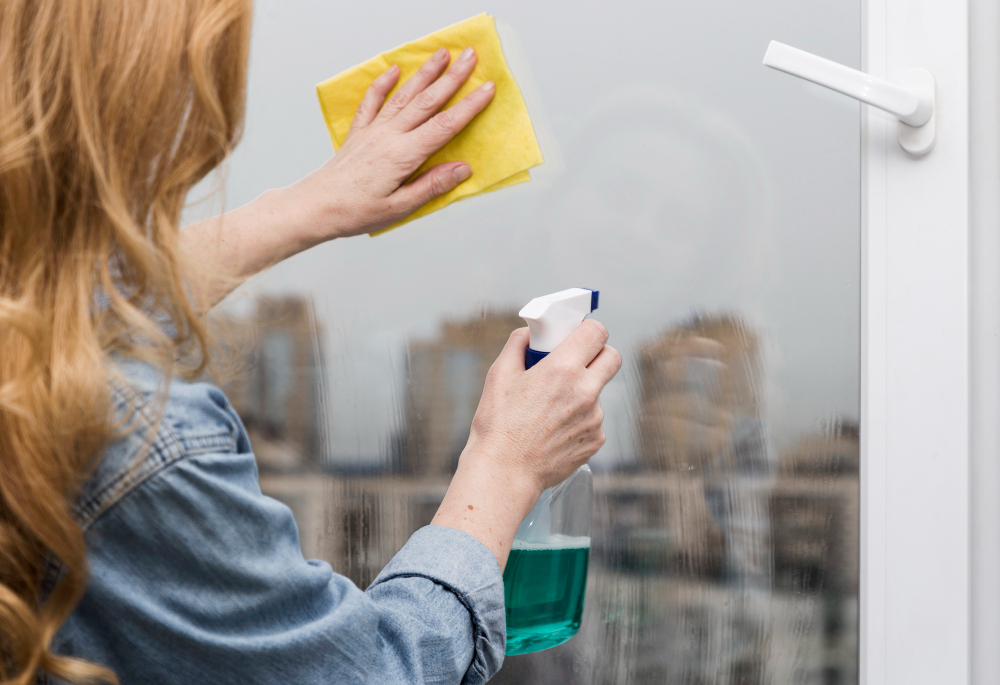Cleaning windows after a sandstorm or heavy pollution exposure requires careful and thorough steps to ensure effective cleaning without causing damage. The steps taken won’t differ drastically from regular cleaning but will require some additional steps and repeating some. Here’s a step-by-step guide:
- Seal the house to stop a draught from picking up excess debris and spreading around the property. Wearing safety equipment like a face mask will come in handy. Remove all the contaminants around the house using a vacuum.
- Use a dry, soft brush to remove debris from the windows and sweep or vacuum the loose particles.
- Prepare a cleaning solution of dish soap or cleaning solution with water.
- Dip a sponge or cloth into the solution and gently scrub the windows. There may be areas that have excessive dirt, sand or pollution residue, pay extra attention to these areas.
- Rinse the windows thoroughly with clean water to remove any remaining cleaning solution. Ensure that all soap or cleaner residues are completely washed away.
- Use a squeegee to remove water from the glass. Start at the top and pull the squeegee down in a smooth, continuous motion. Wipe the squeegee blade with a clean, dry cloth after each time.
- To get a nice streak-free finish, use a microfibre cloth to wipe the edges and any remaining moisture.
By following these steps, you can effectively clean windows after a sandstorm or heavy pollution exposure, restoring clarity and maintaining the longevity of your windows.







